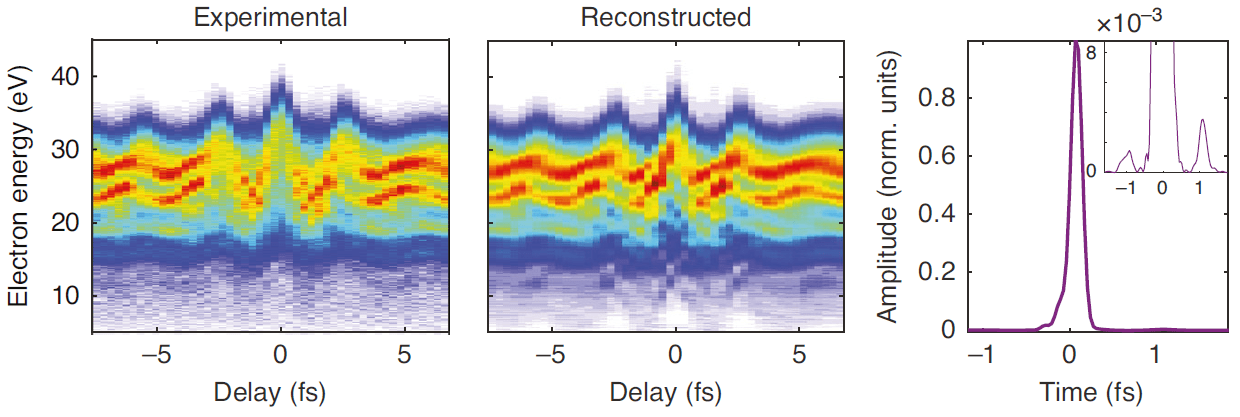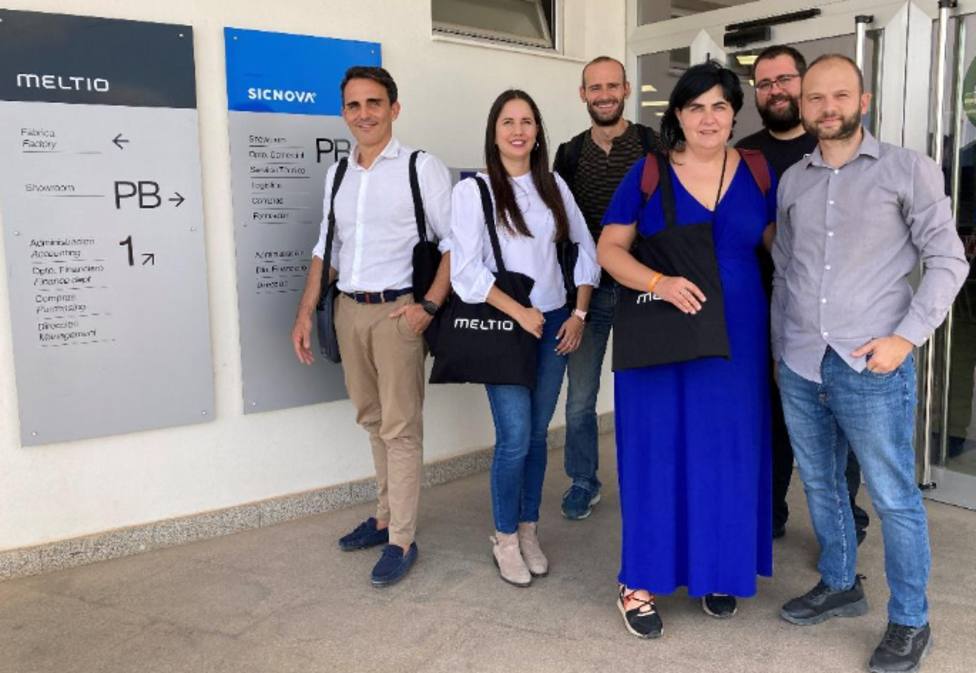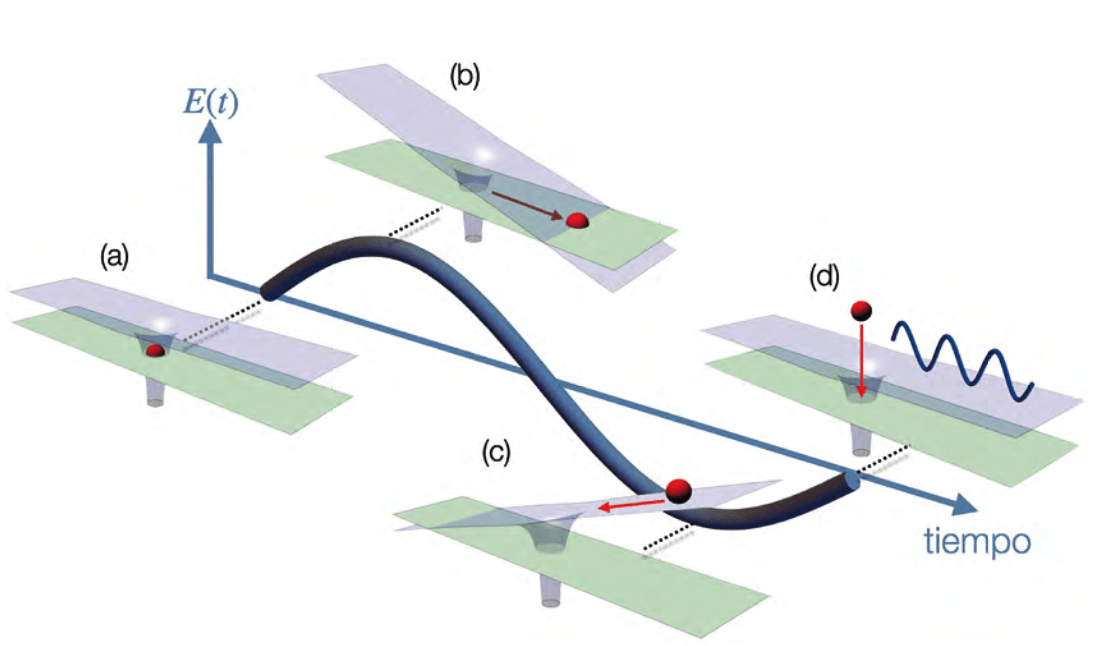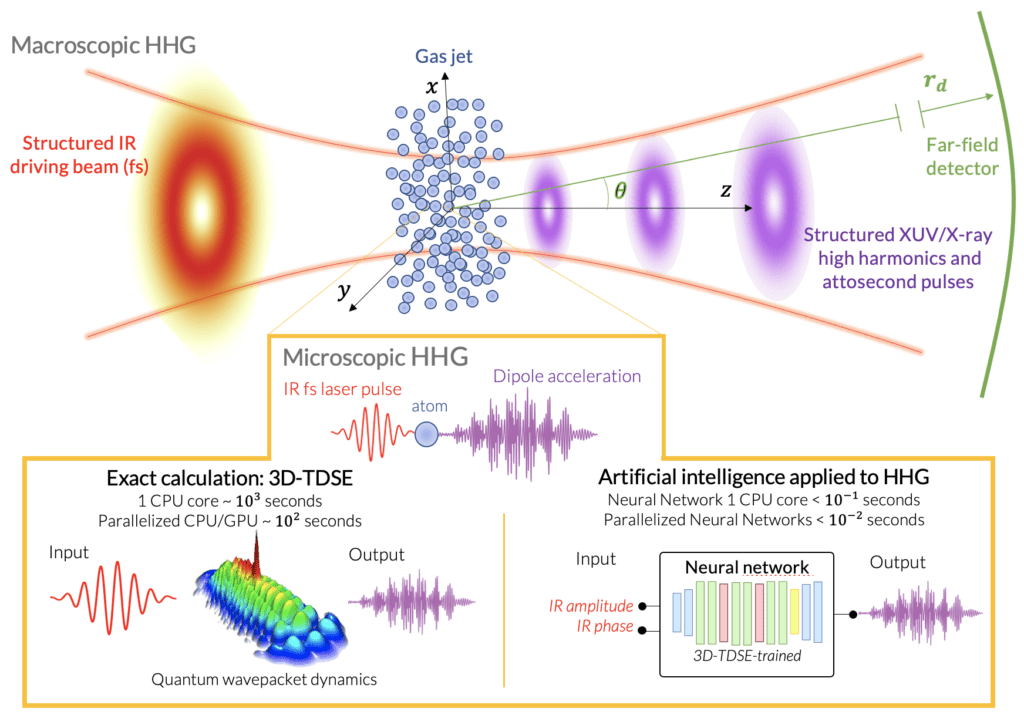In this paper, published in collaboration with researchers from the Politecnico di Milano, ETH Zürich, and Lund University, we explore an innovative approach to generate isolated attosecond pulses using a semi-infinite gas cell. Traditionally, experiments generating these extremely short pulses employ gas jets or short gas cells at high pressures, ensuring the necessary phase matching for efficient high-order harmonic generation. However, longer, lower-pressure media have not been used due to the difficulties in achieving good phase matching over such a long distance, often leading to less effective results.
Our work challenges this conventional view by demonstrating that it is possible to efficiently generate isolated attosecond pulses in an extended medium configuration, such as a semi-infinite gas cell (SIGC) filled with a noble gas at low pressure. Our results show that the incident infrared field, during its nonlinear propagation through the SIGC, creates a plasma channel in the final part that plays a crucial role in self-regulating its spatiotemporal structure and facilitating the phase matching conditions necessary to produce these isolated attosecond pulses.
Experiments, conducted by our collaborators at the Politecnico di Milano, have managed to characterize, for the first time and clearly in an extended medium, isolated pulses with a duration of 180 attoseconds and a continuous spectrum in the 20-45 eV energy range, making them very useful for ultrafast spectroscopy experiments.
Supporting the experiments, we present detailed simulations developed by our team that provide a better understanding of the mechanisms involved. These simulations, which combine the atomic-level quantum dynamics of the harmonic generation process with the nonlinear propagation of the incident laser pulse, confirm the experimental findings. One of the most important aspects we observe is that the gradual increase in gas pressure in the cell creates a temporal window of phase matching during which the emission of attosecond pulses is especially efficient. As the pressure increases, this window is reduced, allowing the generation of a single attosecond pulse in half a cycle of the incident laser.
In summary, our work demonstrates that long media configurations, such as the semi-infinite gas cell, are not only viable for generating isolated attosecond pulses but, under the right conditions, can overcome some of the traditional limitations of short media, opening up new possibilities for experiments requiring extremely high temporal resolution. This advance could have applications in fields such as ultrafast spectroscopy and studies of electronic dynamics in complex materials.
More information in:
Vismarra, M. F. Galán, D. Mocci, L. Colaizzi, V. W. Segundo, R. Boyero-García, J. Serrano, E. C. Jarque, M. Pini, L. Mai, Y. Wu, H. J. Wörner, E. Appi, C. L. Arnold, M. Reduzzi, M. Lucchini, J. San Roman, M. Nisoli, C. Hernández-García, and R. Borrego-Varillas, “Isolated attosecond pulse generation in a semi-infinite gas cell driven by time-gated phase matching,” Light Sci. Appl. 13, 197 (2024). https://doi.org/10.1038/s41377-024-01564-5











